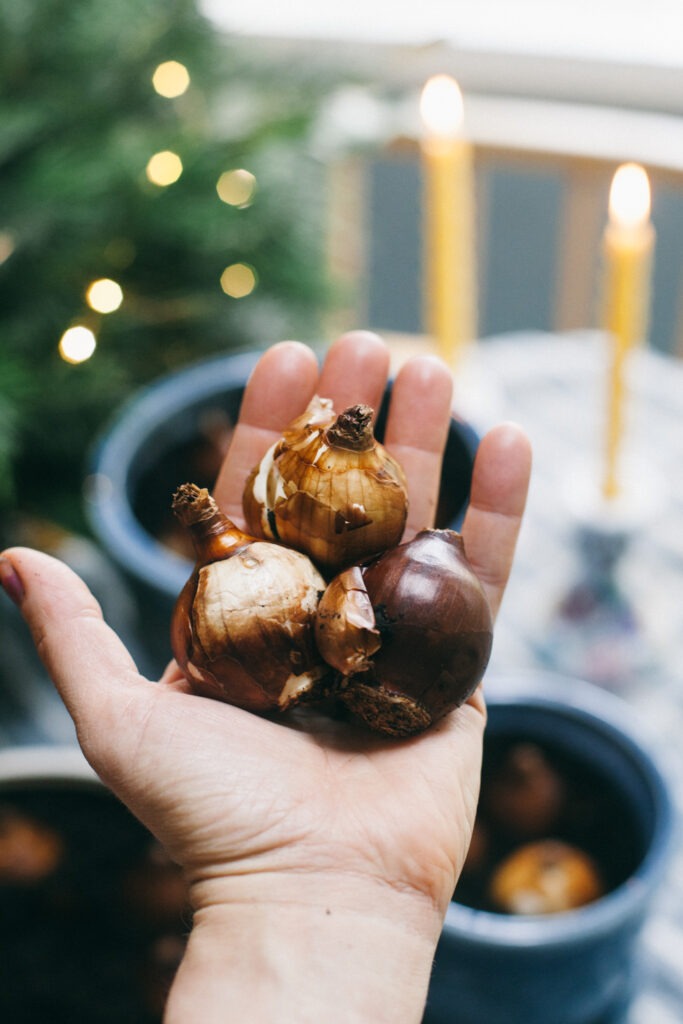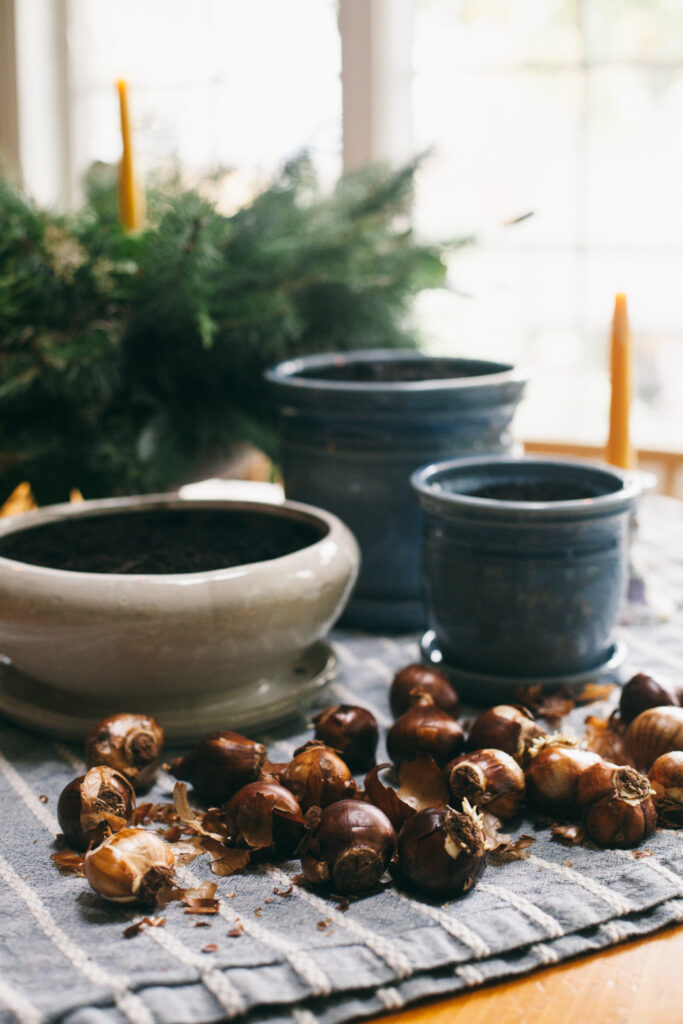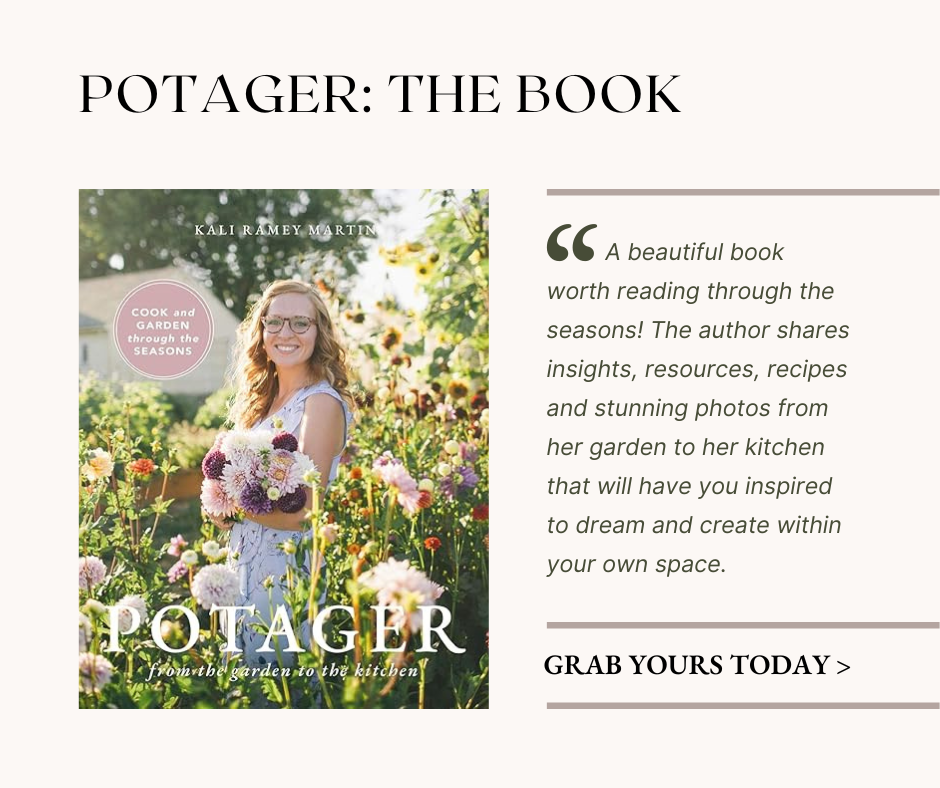
If you are anything like me, January and February can feel…well, STARK. Nothing is growing outside, here in Oregon it is typically cold and wet and dreary. By February I’m often ready to pack my bags and head for sunnier skies. But over the last few years, one of the things that has really helped me through is growing forced bulbs.
What is a forced bulb?
A forced bulb simply means a bulb that is “forced” to flower at a time other than when it usually would. Some typical forced bulbs that are grown indoors are Amaryllis, Paperwhites, Hyacinth, Daffodils, Narcissus, Tulips and Crocus.


Is it too late to plant forced bulbs?
NO! Though Amaryllis is especially marketed as a Christmas flower, never fear! If you plant your forced bulbs now, they will bloom in 3-8 weeks. Isn’t that great?! You can still have beautiful blooms INSIDE, when everything is still cold and dreary outside.
How do you plant forced bulbs?
Planting forced bulbs is a little different than planting bulbs outside. When you plant bulbs outside, you typically plant them deep in the soil, where they can have the proper amount of dark and cold so they bloom at the proper time. When you plant bulbs inside, you’re trying to speed them up, so you want them exposed to the light.
I typically plant mine in pea gravel, nestling each bulb about half way into the rocks. You want the roots pointing down, obviously. And the little sprout-y end pointing up. I like using gravel because it’s cleaner for indoors and I don’t have to worry about my bulbs rotting in moist soil.
You will water your bulbs regularly. Just like you would water flowers outside. You’ve got make sure they have enough water to grow into the beautiful blooms you’re looking for, after all. To keep the water from evaporating from the gravel too quickly, I like to gather moss from the trees outside and top my containers with it. It looks really pretty and holds the moisture in perfectly.


Can you plant your forced bulbs outside after they’re done blooming?
Yes! You totally can. The large blooms, like Amaryllis aren’t always the best candidate for this, but smaller flowers that spread naturally- Snowdrops, Muscari, Narcissus, etc.- are a great option!
Here’s how to prep your bulbs for planting outdoors:
- Clip off any dead blooms. Let the soil/gravel you have them planted in, dry out completely. Remove any dried, shriveled leaves and clip the dead stems to just a few inches above the bulbs.
- Store in a cool, dark place through the Spring and Summer. You can store them in a brown paper bag with some vermiculite, though I just keep mine in a plain brown paper lunch bag. You want them to be able to breathe.
- In the fall, pull out your bulbs and plant them in the ground! You can add some bulb fertilizer, or just cross your fingers and hope for the best. It’s not a perfect science, but it’s worth the effort for free flowers!
Where do I get bulbs for growing inside?
I tend to be a brand loyalist when it comes to bulbs. I’ve had incredible success with all of my bulbs- indoors and out- from John Scheepers, so I can certainly recommend them. But here’s a few other sources you might try.
- Your local farm or hardware store. This sounds a little funny, but our local farm/feed store always has forced bulbs around the holidays. Often times they come in a kit with a container, planting material and instructions. It’s an easy way to get started!
- Eden Brothers. I’ve never ordered forced bulbs from them before, but I have ordered other items which have done really well. They have a good reputation, and I would certainly trust them with my money.
- White Flower Farm. Last year I ordered a stunning white Amaryllis I couldn’t find anywhere else from these guys and it was beautiful. They have a great selection and lots of forced bulb gift sets as well.
- Etsy. You may be thinking, “Wait, Etsy has flower bulbs!?” YES! They do. And lots of seeds, starts, roots and rhizomes from independent farmers and growers. I have purchased everything from dahlia tubers to sunflower seeds on Etsy and have been very happy with my purchases! You’ll need to do your due diligence, make sure it’s a reputable seller, etc. But it can be a really great source for some hard-to-find varieties.

What kind of container should I use for forced bulbs?
There are really no restrictions when it comes to where to plant your. I love this about them! I have used Christmas dishes, a vintage soup tureen, terra cotta, ceramic pots and pretty much anything else that struck my fancy. There are lots of special vases out there, but honestly, a good old thrifted bowl or platter will do just fine!
What tools do I need for forcing bulbs?
- A planting vessel. Vintage china, a terra cotta or ceramic pot, concrete dish/plate, etc. There are also lots of lovely glass vessels like this one, where the bulbs are suspended above water, roots reaching down to drink.
- Floral scissors. For trimming off spent blooms, or cutting them for arrangements. I’m dying to order this cute green pair.
- Bulbs! This may seem obvious, but for forcing bulbs you need…BULBS! I’ve already mentioned some good sources, but yes, they have them on THE AMAZON.
What are the best bulbs to plant indoors?
So far, I’ve only tried the traditional Amaryllis and Paperwhites. A friend gave me a beautiful glass vase with some forced tulips growing in water once. They were stunning, but I haven’t attempted them again. Someday!
After reading From Seed to Bloom by Milli Proust, I’m totally inspired! She features some insanely gorgeous forced arrangements with bulbs I’ve never seen growing inside before. Forced bulbs aren’t in my budget this year, but here’s a few I plan to try next winter!
- Hyacinths. Hyacinths might be one of the most cheery blooms alive. They are everything my soul needs after a long winter! Almost like a bouquet of cotton candy, I can just imagine them in my living room. These are also a great candidate for planting outside once they’re done indoors.
- Narcissus. Perfect for a taller pot, I think I would choose my favorite Mt. Hood variety. Their clear, white color would be so refreshing in February.
- Crocus. I’ve not been a huge fan of Crocus traditionally, mostly because they often come in my two least favorite colors: yellow and purple. While I have a hard time forgiving these colors anywhere else, usually in Spring, I can make an exception. I might try a lovely pale buttercream yellow next year.
- Muscari. Also called Grape Hyacinth, Muscari are just so cute. I’m thinking little tiny dishes with a few of these poking up through some moss. Yes please! And they come in a rainbow of lovely colors. Sign me up.
- Snowdrops. In her book, Milli Proust has a photo of a bunch of forced Snowdrops blooming in a tiny concrete dish, topped off with moss. It’s the most charming, whimsical little thing and I can’t wait to recreate it.
Are you going to try forced bulbs?
Have you had success with growing bulbs indoors in the winter time? Leave a comment below and tell me all about it! Or, pin the image below so other people can learn all about these lovely blooms! I can’t wait to hear if you give forced bulbs a try.

Kali
About Me
Hi! I’m Kali. Oregon mama, farmer’s wife and creator of the Potager book and blog. Join me and as we cook and garden the seasons!













